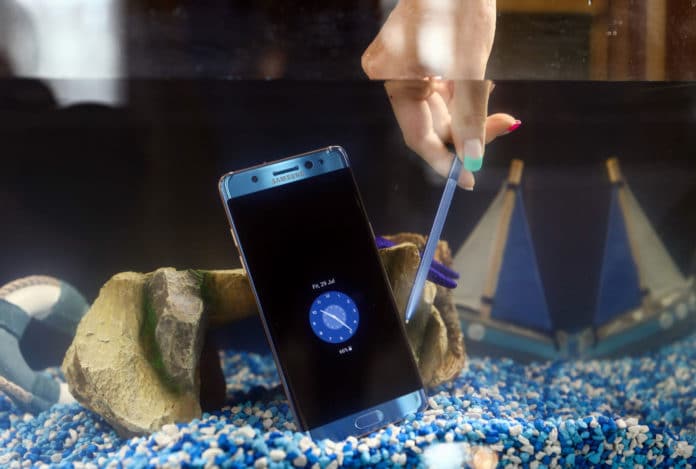Southwest Airlines said a Samsung Electronics smartphone caused smoke that forced the evacuation of a plane waiting to depart from Louisville, Kentucky, almost three weeks after U.S. safety regulators started an official recall of the Galaxy Note 7.
None of the 75 passengers and crew was injured after smoke was reported in the cabin of the Boeing 737 at 9:20 a.m. local time Wednesday, said Natalie Chaudoin, a spokeswoman for the Louisville Regional Airport Authority. Flight 994, headed for Baltimore-Washington International Airport, was still at the gate when the incident occurred. The type of Samsung phone involved hasn’t been determined, Southwest said.
“Samsung is looking into the issue and will have to confirm the model,” Lori Crabtree, a spokeswoman for the airline, said in an emailed statement. “A customer reported smoke emitting from an electronic device.”
The incident involved “just smoke – no explosion or flames of any kind,” Crabtree said in an email. “Some charring occurred to the carpet.”
The phone involved was a replacement Galaxy Note 7, owner Brian Green told The Verge, a technology news-focused website. Green said he picked up the phone at an AT&T Inc. store on Sept. 21, and showed The Verge a photograph of the box that displayed a black square symbol indicating a replacement phone.
Samsung recalled Galaxy Note 7 smartphones because a battery flaw can lead to overheating, posing a burn hazard to consumers. The Federal Aviation Administration will investigate the report that a phone was the source of the smoke, the agency said in an e-mailed statement.
The Consumer Product Safety Commission is communicating with the FAA and Samsung to determine whether the initial reports are accurate, spokesman Scott Wolfson said in an email. Samsung didn’t immediately respond to requests for comment.
The Southwest aircraft was temporarily taken out of service for a thorough inspection. It suffered “minimal damage,” Crabtree said.
After the consumer product commission announced the recall, the FAA and the Pipeline and Hazardous Materials Safety Administration — which jointly regulate potentially dangerous items on airlines — acted to ensure the phones don’t endanger aircraft. Currently, airlines aren’t allowing passengers to power up the devices or charge them on flights, based on an order from the FAA and PHMSA.
The agencies issued restrictions that allow owners of the recalled Note 7 to take it on a plane only if they turn it off, protect the power switch from accidental activation and not stow the device in checked baggage.
Samsung earlier told U.S. regulators the phone’s battery was slightly too big for its compartment and the tight space pinched the battery, causing it to short circuit. The company moved quickly to recall more than 2.5 million Note 7s after the battery troubles emerged and has already begun shipping replacements to key markets, such as Korea and the U.S.
There were at least 17 instances in which batteries smoked or caught fire on U.S. airlines or air-cargo haulers in 2015, according to records kept by the FAA. Another three cases occurred this year through Jan. 15, the most recent date for which data was collected.
All but one of those cases involved lithium-based cells. The Galaxy Note 7 batteries are rechargeable lithium-ion.
While the FAA considers small single batteries dangerous and has guidelines for how they should be carried, none of the dozens of incidents involving such batteries in recent years has led to crash, according to agency records.






